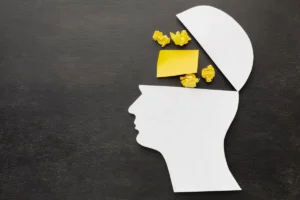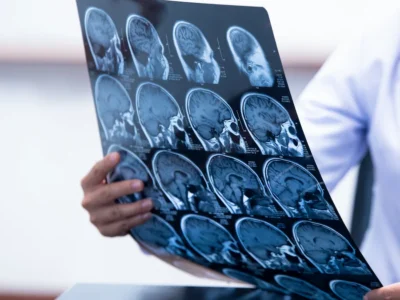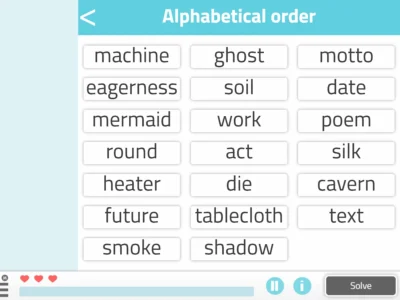Biomedical researcher Daniela Ramos writes in this article about sustained attention and proposes programs for the rehabilitation of sustained attention.
What is attention?
Attention is a basic, multidimensional cognitive ability fundamental to information processing [1].
On the one hand, it is considered basic because it is indispensable for the proper functioning of higher psychological processes such as learning, receiving, selecting and assimilating stimuli that will later be encoded and stored in an organized way in memory [2].
On the other hand, it is multidimensional because it is composed of several levels, which we refer to as focused attention, sustained, selective, alternating and divided according to the clinical model of Sohlberg and Mateer. The relationship between the different levels is hierarchical, so the proper functioning of higher levels depends on the adequate functioning of the lower and less complex levels [1].
The study of the development of attention has shown that, from birth until the first year, children’s attentional capacity is based solely on maintaining a state of alertness and orienting to sensory events, which corresponds to focused attention.
During this first period, the duration of observation varies, being:
- Greater than 8-10 weeks,
- decreasing during months 3 to 6 because more efficient information processing requires less time to process the stimuli,
- observed, from 7 months on, a greater variability in observation duration, since the greater processing capacity allows them to quickly process simple stimuli, but also allows them to process more complex ones that require more time.
From the first year of life until adulthood there will be a progressive development of attentional flexibility and the ability to control and manipulate attention, giving rise to the more complex attentional levels previously mentioned [3].
What do we call sustained attention?
Sustained attention, in particular, corresponds to the “ability to maintain a consistent behavioral response during a continuous or repetitive activity” [1]. In other words, this type of attention implies maintaining a vigilance behavior, focusing our attention on a single stimulus for a certain period of time.
Furthermore, it allows us to manipulate and process the information from attended stimuli through working memory. Vigilance and working memory are the two subcomponents of sustained attention proposed by Sohlberg and Mateer [4].
An everyday example where we engage our sustained attention is reading, an activity that requires a continuous response to a specific stimulus, the text, as well as the processing of the received information that allows us to understand what we are reading.
Impairment of sustained attention and rehabilitation
This cognitive ability is especially vulnerable to brain impairments that can arise from a neurological disease (e.g., Alzheimer’s disease; [5,6]), an acquired brain injury (e.g., traumatic brain injury; [7]), developmental disorders (e.g., autism and ADHD; [8-10]) and even psychiatric disorders (e.g., depression; [11]). Deficits result in a disruption of vigilance due to a limited capacity to maintain a response to a task or a fluctuating capacity as a result of attentional lapses [4].
However, thanks to neuroplasticity, that is, the brain’s ability to modify itself structurally and functionally, cognitive deficits can be improved or compensated, as long as appropriate rehabilitation is carried out.
Until recently, attention rehabilitation programs were based on pencil-and-paper tasks, commonly called worksheets. An example of this type of exercise for sustained attention are the tasks in which the person must count the number of stimuli presented to them on a sheet.
However, in recent years, the rise of new technologies (ICT) has led to a growing use of these digital tools for the implementation of increasingly effective new rehabilitation programs.
In this regard, there is a variety of computerized programs whose approach is based on the repetition of attentional tasks of increasing difficulty in order to restore the neural networks of attention [12].
Programs to train attention
One of the most used programs is the Attention Process Training (APT; [1]), which, being based on the previously mentioned clinical model, contains attention exercises sustained, selective, divided and alternating, using auditory stimuli, as well as pencil-and-paper exercises.
Sustained attention in particular is worked on through exercises in which the person must attend to and identify target stimuli, usually words or sequences of them, and mental arithmetic exercises. For example, one of the exercises consists of striking the table each time they hear a number that is consecutive to the previous one.
This program has been shown to be effective in its purpose; however, the search for greater ecological validity in rehabilitation has promoted the development of new programs that include exercises based on activities of daily living, and more recently using virtual reality [e.g., 13-15].
A clear example of this advance in the conception of attention training, and other cognitive functions is the NeuronUP program. It is a virtual platform in which the professional has a wide range of games for each cognitive function, both for adults and for children.
Bibliography
- Sohlberg MM, Mateer CA. Effectiveness of an attention-training program. Journal of Clinical and Experimental Neuropsychology. 1987;9(2):117–30.
- Gagne, R. M. Instruction and the conditions of learning. Psychology of school learning: Views of the learner. 1974;1:153-175.
- Swingler MM, Perry NB, Calkins SD. Neural plasticity and the development of attention: Intrinsic and extrinsic influences. Development and Psychopathology. 2015;27(02):443–57.
- Sohlberg MM, Mateer CA. Improving Attention and Managing Attentional Problems. Annals of the New York Academy of Sciences. 2006;931(1):359–75.
- Park M, Hood MM, Shah RC, Fogg LF, Wyatt JK. Sleepiness, parkinsonian features and sustained attention in mild Alzheimers disease. Age and Ageing. 2012;41(6):765–70.
- Berardi AM, Parasuraman R, Haxby JV. Sustained Attention in Mild Alzheimers Disease. Developmental Neuropsychology. 2005;28(1):507–37.
- Marsh NV, Ludbrook MR, Gaffaney LC. Cognitive functioning following traumatic brain injury: A five-year follow-up. NeuroRehabilitation. 2016Oct;38(1):71–8.
- Murphy CM, Christakou A, Daly EM, Ecker C, Giampietro V, Brammer M, et al. Abnormal Functional Activation and Maturation of Fronto-Striato-Temporal and Cerebellar Regions During Sustained Attention in Autism Spectrum Disorder. American Journal of Psychiatry. 2014;171(10):1107–16.
- Chien Y-L, Gau SS-F, Shang C-Y, Chiu Y-N, Tsai W-C, Wu Y-Y. Visual memory and sustained attention impairment in youths with autism spectrum disorders. Psychological Medicine. 2015;45(11):2263–73.
- Christakou A, Murphy CM, Chantiluke K, Cubillo AI, Smith AB, Giampietro V, et al. Disorder-specific functional abnormalities during sustained attention in youth with Attention Deficit Hyperactivity Disorder (ADHD) and with Autism. Molecular Psychiatry. 2012;18(2):236–44.
- Yang X, Ma X, Huang B, Sun G, Zhao L, Lin D, et al. Gray matter volume abnormalities were associated with sustained attention in unmedicated major depression. Comprehensive Psychiatry. 2015;63:71–9.
- Park NW, Ingles JL. Effectiveness of attention rehabilitation after an acquired brain injury: A meta-analysis. Neuropsychology. 2001;15(2):199–210.
- Lo Priore C, Castelnuovo G, Liccione D, Liccione D. Experience with V-STORE: considerations on presence in virtual environments for effective neuropsychological rehabilitation of executive functions. CyberpsycholBehav. 2003 Jun;6(3):281-7.
- Tost D, Grau S, Ferre M, Garcia P, Tormos JM, Garcia A, et al. PREVIRNEC: A cognitive telerehabilitation system based on Virtual Environments. 2009 Virtual Rehabilitation International Conference. 2009.
- Riva G, Gagglioli A, Villani D, Preziosa A, Morganti F, Corsi R. NeuroVR: An Open Source Virtual Reality Platform for Clinical Psychology and Behavioral Neurosciences. Studies in HealthTechnology and Informatics. 2007;125.
If you liked this post about sustained attention and its rehabilitation, you may be interested in these NeuronUP posts:
“This article has been translated. Link to the original article in Spanish:”
Rehabilitación de la atención sostenida







 Organoids: the new technique for creating a brain
Organoids: the new technique for creating a brain
Leave a Reply